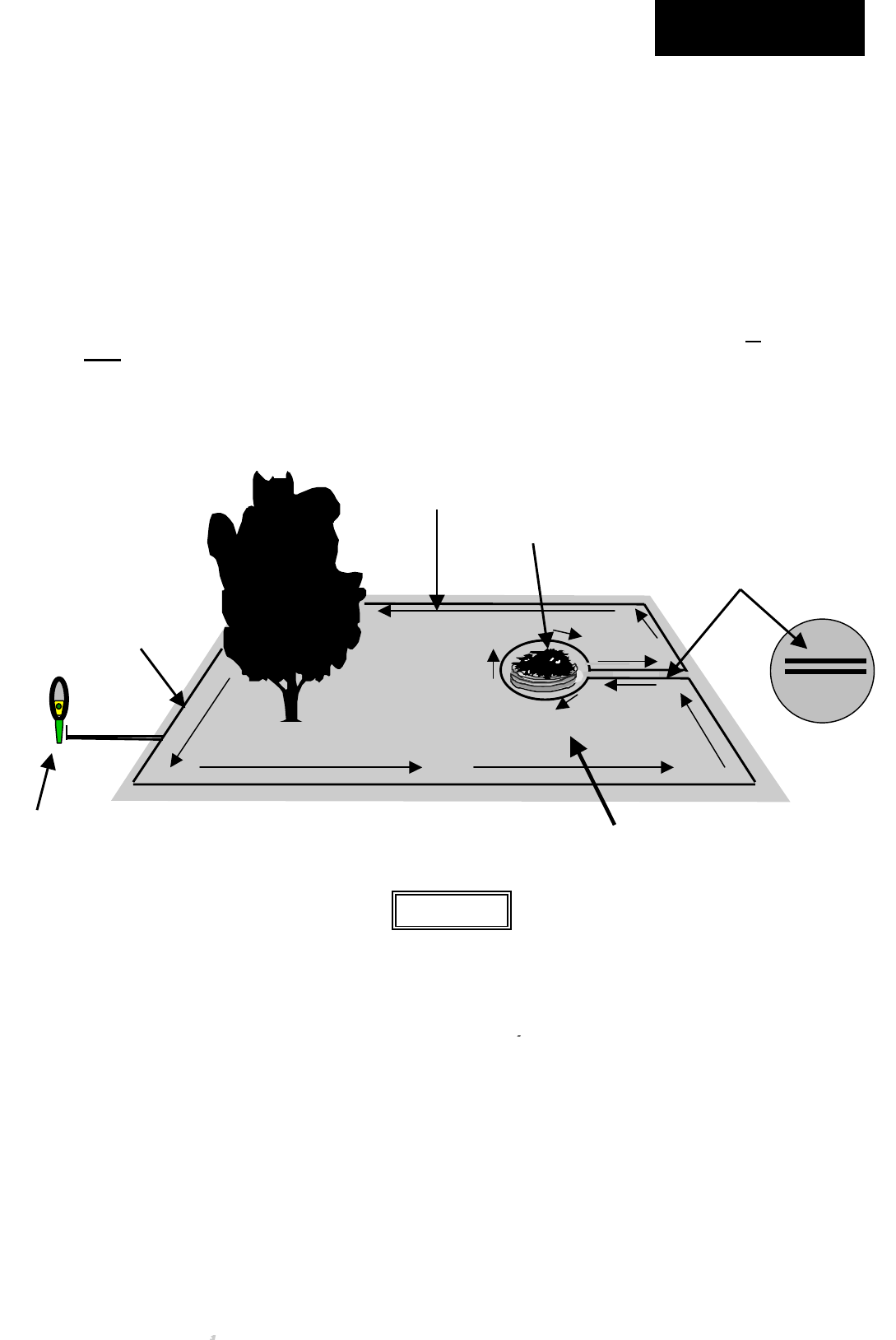
1.5 Narrow Areas And Narrow Passes
The minimum distance for an effective narrow pass is 5.5 feet (1.7 m) between perimeter wires.
Figure 1.8.
1.6 Defining Obstacles-Perimeter Islands
Many obstacles can be left in the lawn without consideration to excluding them using the
perimeter wire. The basic rule of thumb is that the obstacle must be at least 6 inches (15 cm)
high from the ground and the obstacle must be relatively rigid. Good examples of these kinds of
obstacles include many trees, phone poles, power poles and flag poles.
To create a perimeter island, take the wire from the perimeter section closest to the obstacle and
peg the wire around the obstacle, returning back to the same spot of the perimeter. There are
two keys to setting up the perimeter wire to exclude an obstacle; 1) the two wires going to
and
from
the obstacle should be placed under the same peg (touching) and 2) follow the direction of
set up as shown in Figure 1.6.
Perimeter
wire
Direction of set up
followed around
obstacle
Flower bed
While the picture shows two
wires separate, they should
be adjacent and no more than
1/8 inch (3 mm) from one
another
Figure 1.6
Perimeter switch placed at least 5 feet
(1.5 m) from perimeter. Wires to
perimeter switch should be placed
adjacent, the same as wires leading to
an obstacle.
Direction of
set up
Chapter 1
Page 11
